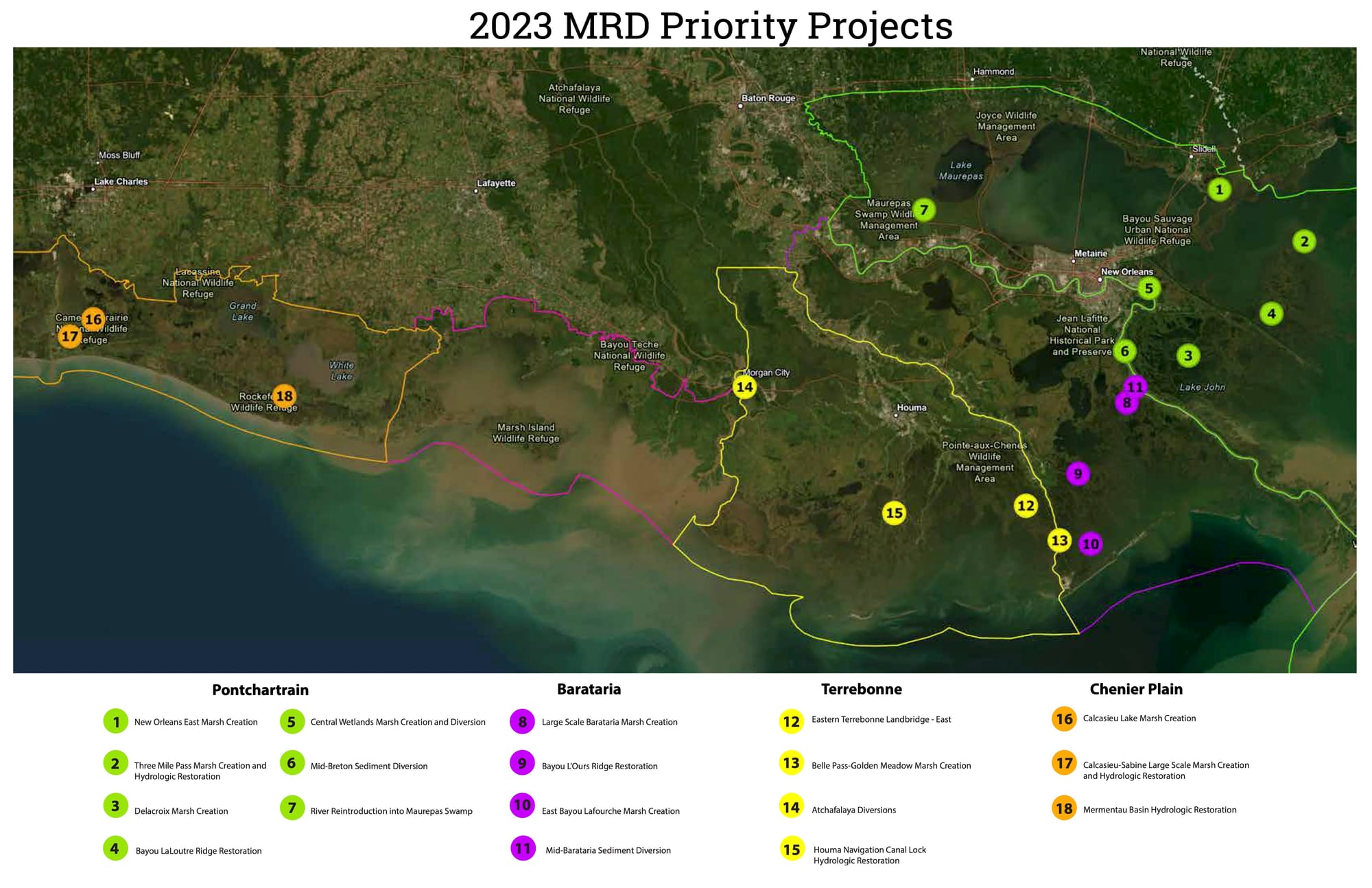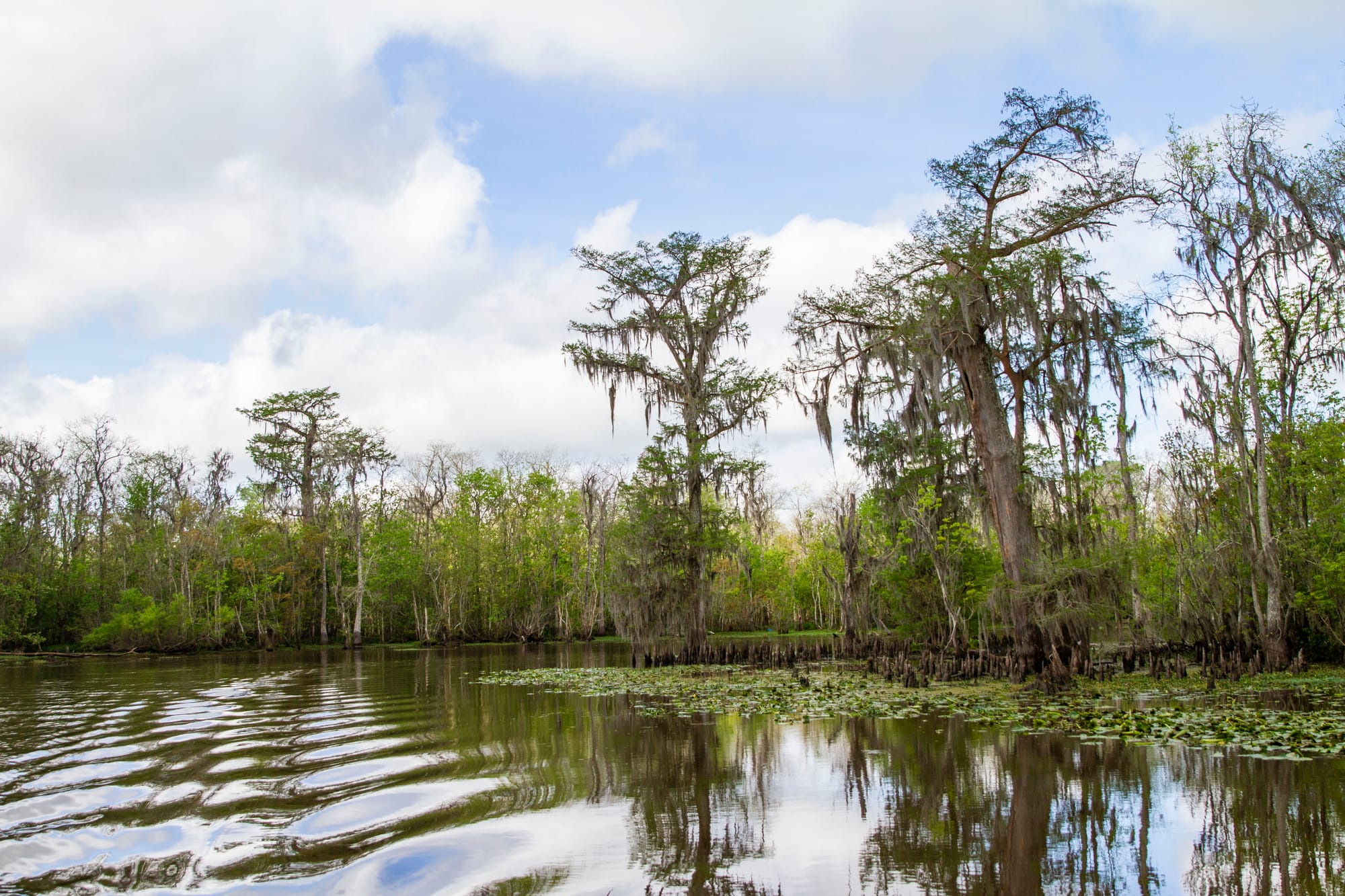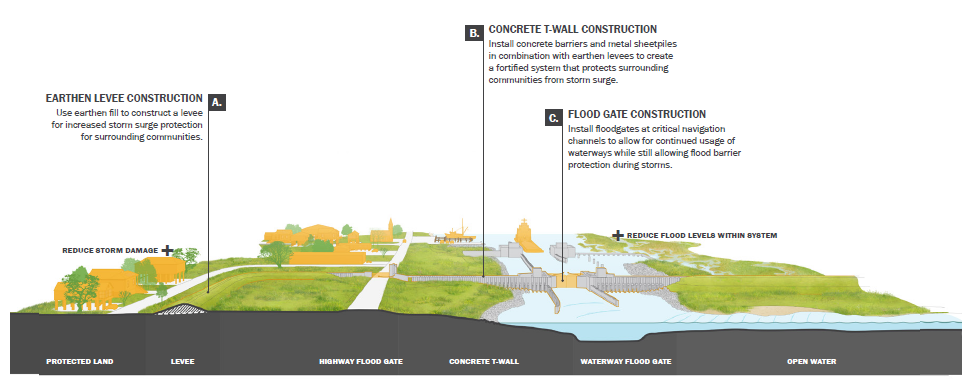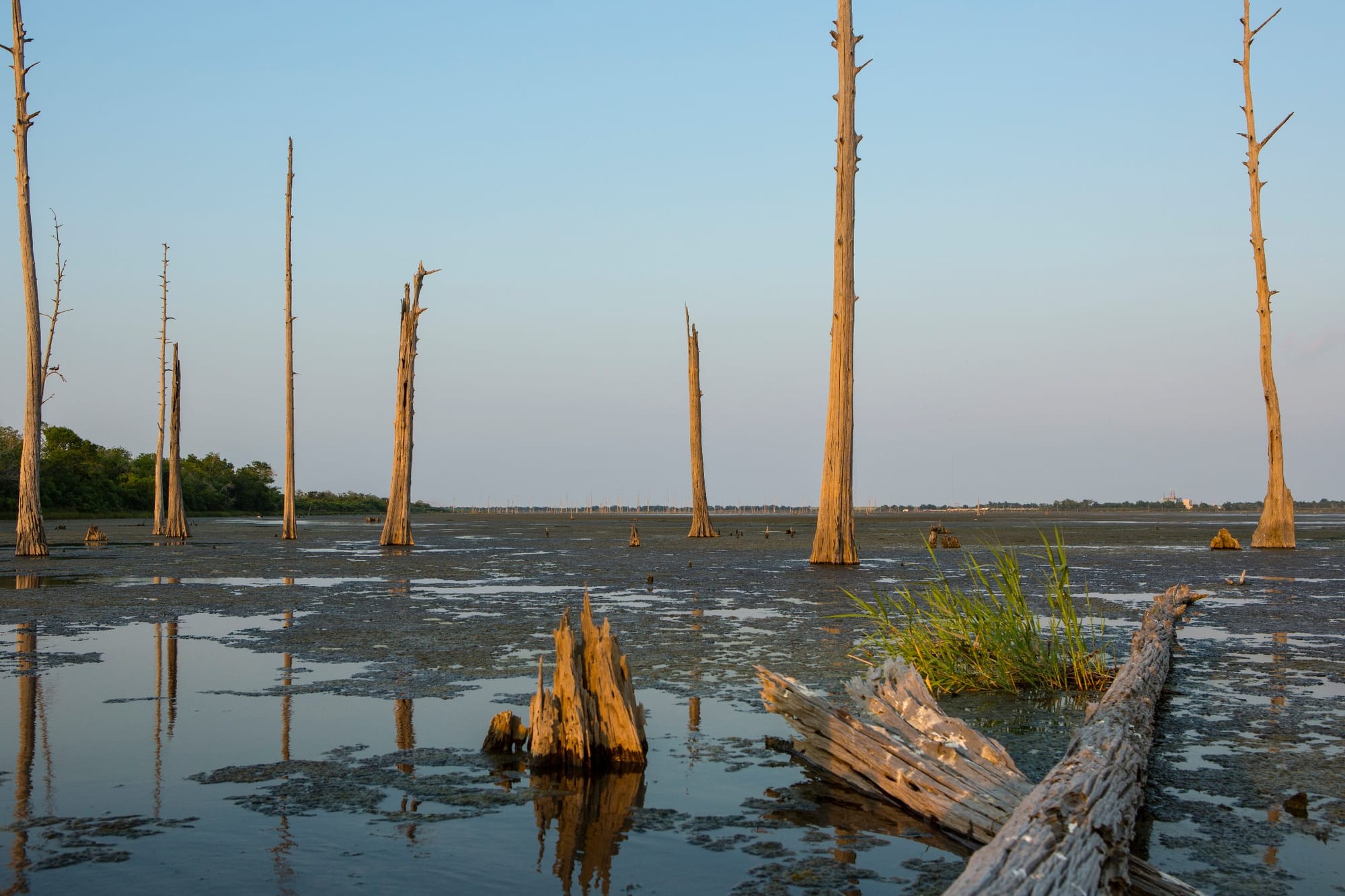As funding dries up for Louisiana’s coastal restoration program, advocates are strategizing to sustain it
A coalition of environmental groups is pushing 18 projects to protect Gulf Coast communities from land loss and storm damage

Published by Yahoo! News, WWNO, WKRF, Louisiana Illuminator
Louisiana’s desperate efforts to restore and protect its diminishing coastline from further erosion over the past decade has been largely funded by the more than $8 billion in settlement money awarded to the state after the 2010 Deepwater Horizon oil spill.
But that money is drying up as the state continues to lose approximately a football field-size of land every 100 minutes along its Gulf Coast.
Representatives from an alliance of state and national conservation groups this week said now is a critical time for Louisiana leaders to strategize on how to sustain the state’s ambitious coastal restoration program as the landscape to secure federal funding for such projects becomes increasingly competitive as the effects of climate change increasingly are felt.
Restore the Mississippi River Delta — a coalition including the Environmental Defense Fund, National Audubon Society, National Wildlife Federation and Pontchartrain Conservancy — identified 18 projects from Louisiana’s 2023 Coastal Master Plan that it says would make the biggest impacts in preserving the wetlands, wildlife and industries on the endangered Louisiana Gulf Coast.

“Several years of $1 billion-plus implementation investments under our belt, we know that that is a minimum standard of what we want to achieve here in coastal Louisiana,” said Simone Maloz, campaign director of Restore the Mississippi Delta. “There are certainly other parts of our country that are facing similar environmental consequences that we are, so we have a really competitive time when we go to (Washington) D.C. to ask for those dollars, because there's another state in there right behind us asking for those same dollars.”
Louisiana has lost more than 2,000 square miles of its coastline since 1932, according to the state’s Coastal Protection and Restoration Authority. Intense flooding, increasing number and strength of hurricanes and sea level rise caused by climate change have exacerbated the rate of loss of land, including wetlands, along the Gulf Coast.
Man-made actions including the cutting of canals, oil spills and levee building along the Mississippi River have also contributed to the land loss, according to the coastal authority.

Since 2007, the state has spent billions on coastal restoration and projects aimed at reducing the risks of land loss. The approach is spelled out in Louisiana’s Coastal Master Plan, which has been updated every six years since 2012, when the state received compensation from BP for the Deepwater Horizon oil spill.
The 2010 oil rig explosion was deemed one of the largest environmental disasters in U.S. history, spilling more than 4.9 million barrels of oil into the Gulf of Mexico.
The Coastal Master Plan is essentially an unfunded wishlist of projects. In 2023, the Louisiana Legislature unanimously approved the latest master plan, which outlined 77 projects costing roughly $50 billion over the next 50 years, including:
- $11 billion for “nonstructural” risk management such as residential elevations, commercial floodproofing and voluntary acquisition of properties
- $25 billion for restoration projects, including marsh creation, diversions, land bridges, ridge restorations and hydrologic restoration projects
- $7.7 billion for new levees and improving existing structures
- $2.5 billion is allocated to programmatic restoration efforts and small-scale strategies, such as bank stabilization and barrier island maintenance

The projects are projected to reduce annual storm-surge flooding damage over the next five decades by between $10.7 billion and $14.5 billion a year, according to the master plan.
The 18 projects that Restore the Mississippi Delta identified on its high priority list are targeted around sediment diversion, marsh creation, building land bridges, restoration of oyster reefs and ridges and barrier island maintenance in five basins across the Louisiana coast.

The coalition helps secure funding for projects through letters of support and advocacy work as well as provide foundational science and research to stakeholders and community outreach where projects are targeted to have the most impact.
“These priority projects have been through a rigorous planning process and are backed by years of scientific research,” Lauren Bourg, director of the Mississippi River Delta program for the National Audubon Society, said in a statement. “Louisiana voters overwhelmingly support tackling our land loss crisis head on. In a recent poll, 92 percent of voters agree that a comprehensive restoration plan backed in the latest science is critical for our coast’s future."
Will McDow, associate vice president of Climate Resilient Coasts and Watersheds for the Environmental Defense Fund, said Louisiana stands to lose an additional 4,000 square miles over the next 50 years across its coastline. Executing the 18 priority projects would maximize land-building across five coastal basins, reduce risks to coastal communities, he said in a statement.

Maloz is hoping the success the state has already had in implementing its Coastal Master Plan can be a tool in securing the additional money to stop land loss along the coast.
“We have this roadmap of where we want to go, and we also have proven successes under our belt of how we've made those investments here in coastal Louisiana,” she said. “I think that is really critical to the success of Louisiana's coastal program (and) being able to prove how we spent those dollars and how those investments have paid off so far.”
Floodlight is a nonprofit newsroom that investigates the powerful interests stalling climate action.


